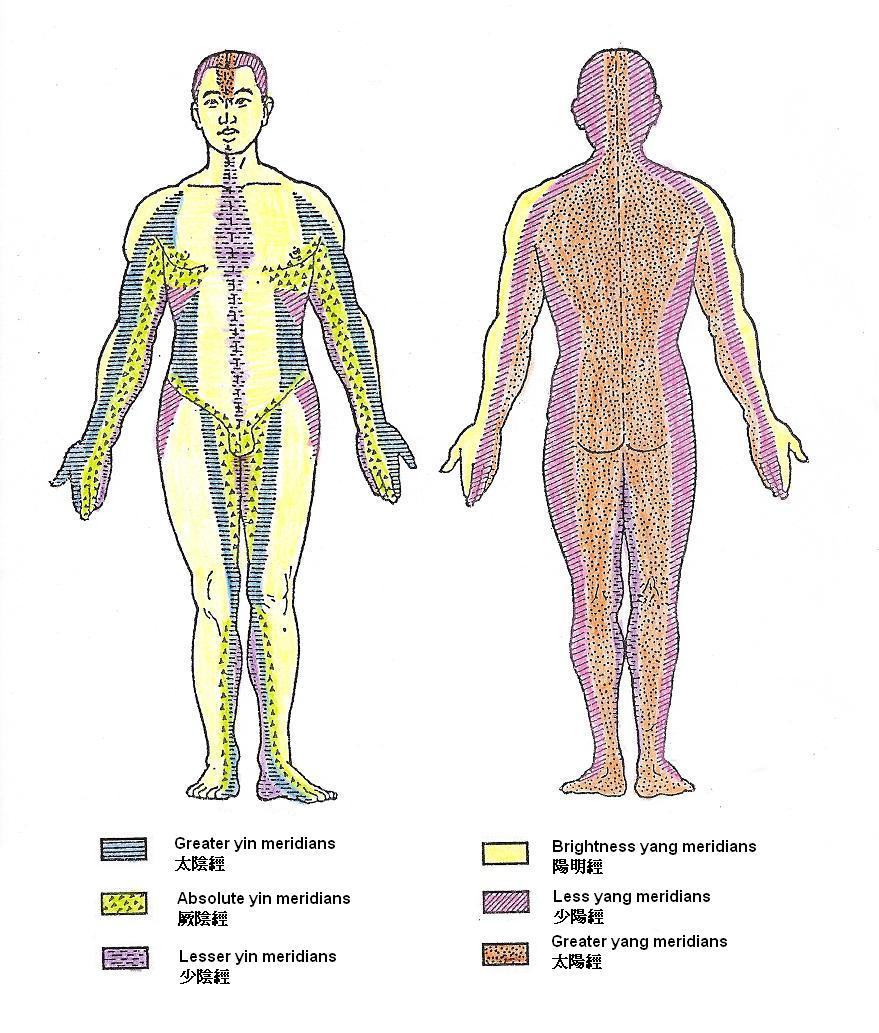In the
meridian system, the
twelve regular meridians form the framework, primarily running vertically deep inside the body. These meridians branch out into various sizes of collaterals, creating an intricate network throughout the body. This network of innumerable collaterals constructs a distribution system for communication and nourishment. Below are some important collaterals in clinical applications:
Fifteen connecting collaterals
The twelve connecting collaterals of the regular meridians run along the limbs, and each of them pairs with a corresponding meridian to establish the “
interior and exterior relationship.” This physiological connection enhances the link between the two meridians.
The remaining three connecting collaterals are primarily responsible for regulating qi (vital energy) and blood flow through the meridian system, aiming to nourish and maintain the body’s functions. Among them, the collateral of the Governor Vessel promotes meridian flow in the back; the collateral of the Conception Vessel promotes meridian flow in the abdomen; and the great collateral of the spleen meridian regulates meridian flow in the sides of the chest.
The areas where these collaterals branch off are called “connecting points,” and stimulating these points can have special therapeutic effects.
Twelve divergent meridians
The twelve regular meridians branch out to run deep into the body, inside the chest and abdomen, or branch out in the head region. Most of them divide from their main meridians near the elbow or knee regions, run into the chest and abdomen cavities, connect with their corresponding internal organs, and then emerge back to the body surface in the head and neck regions.
The twelve divergent meridians link up the meridians and organs, bringing all parts of the body closer together, which expands the therapeutic range of certain acupoints. For example, the yin meridians do not normally run to the head region, but the divergent meridians connect them with the yang meridians. Thus, for some problems in the head, such as headaches and migraines, acupoints (Lu7 & Lu9) on the
lung meridian are selected; while acupoints (Ki3, Ki6) on the
kidney meridian are selected for toothache and throat conditions.
Twelve sinew meridians in tendons
These parts of the twelve regular meridians run into the muscles, tendons, and joints. Their main function is to bind the bones, facilitate joint movement, and maintain normal physical activity. They are the peripheral branches of the twelve regular meridians, running from the extremities to the head and body, traveling on the body surface without entering the internal organs, and gathering at the joints and bones.
Physicians usually regard the sinew meridians as part of the muscles and tendons, which primarily work for joint movement and limb activity. Their symptoms mainly manifest in movement or muscular issues, such as local or whole-body muscle tension, spasms, muscular weakness, or atrophy. Additionally, some health problems may be associated with the sinew meridians, such as ear pain, ear ringing, and poor vision.
Twelve cutaneous regions
The twelve cutaneous regions are the reaction areas on the skin corresponding to the twelve regular meridians. The entire skin surface is divided into twelve parts, known as the twelve cutaneous regions.
The collaterals of the twelve meridians are responsible for dispersing qi in these skin regions, forming the body’s outermost layer and serving as a protective barrier. Observing changes on the skin surface is an important aspect of diagnosis in traditional Chinese medicine (TCM).
Clinical treatment methods such as acupuncture, herbal plasters, moxibustion, compressing and heat therapy are all based on this concept. These treatments work through specific skin areas and can be applied for certain organ disorders, such as bronchitis, asthma, and cholecystitis (inflammation of the gallbladder).
 Skin segments dominated by the yin and yang meridians
Skin segments dominated by the yin and yang meridians



